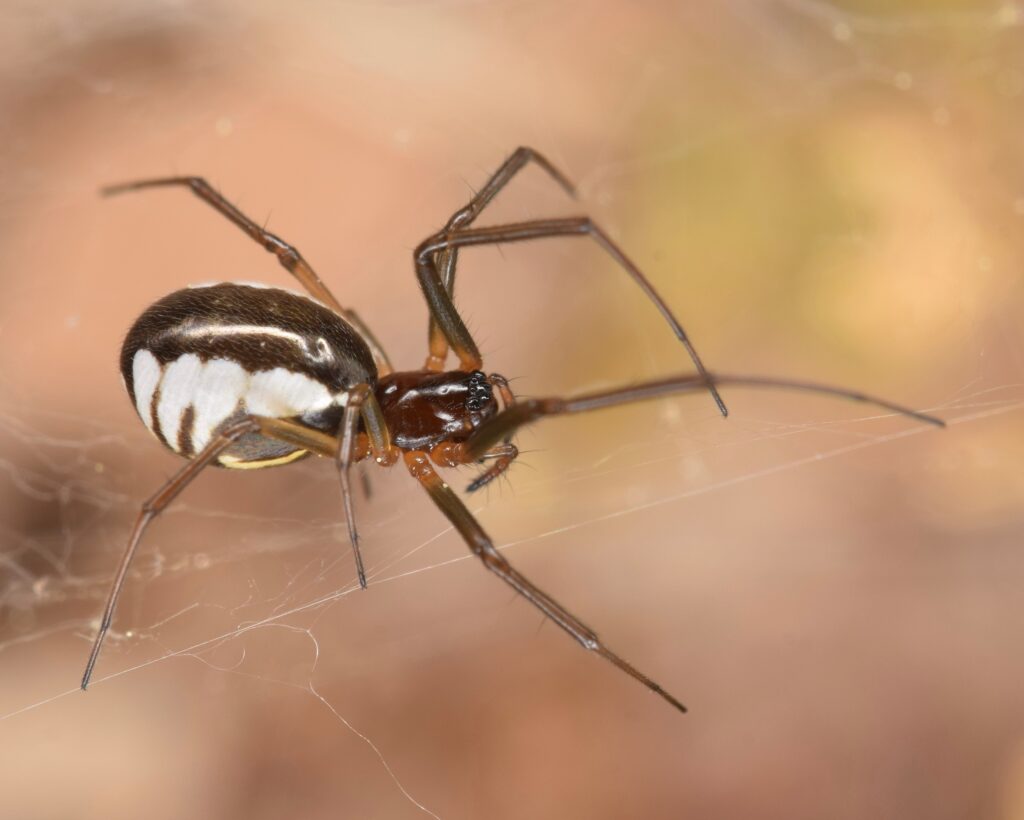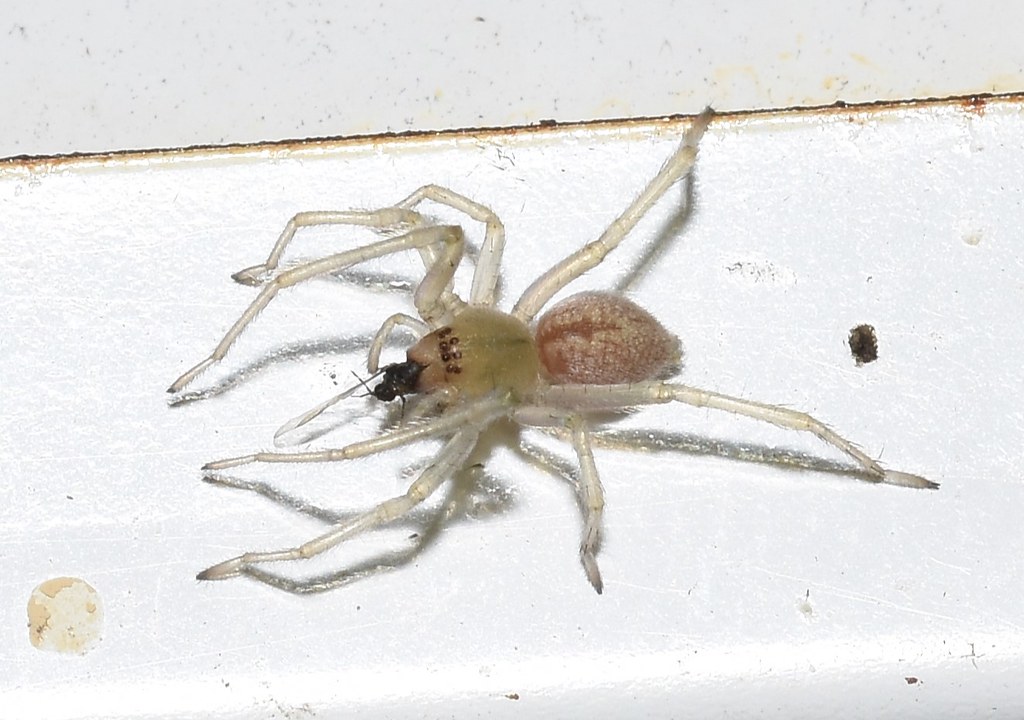Exploring the diverse state of New York reveals not only iconic landmarks like the Empire State Building but also a fascinating array of spiders. From fishing spiders to orb weavers, the state is home to a variety of arachnids. Amidst its natural beauty and unique geography, encountering these spiders adds an interesting dimension to your New York experience, with some species requiring caution due to potential dangers.
Table of Contents
Hogna Baltimoriana

The Baltimore spider, commonly found in parts of New York, is notable for its size, with adult females growing up to 23 millimeters long, surpassing their male counterparts. Identified by a distinctive back cephalothorax and chevron markings on their lower abdomen, these spiders also carry eggs on their backs. Unlike web-builders, they rely on ambush tactics, posing a potential threat due to their exceptional hunting skills.
Dimorphic Jumping Spider

In various parts of New York, you may encounter the dimorphic jumping spider, belonging to the jumping spider family. Adult females can reach 10 millimeters in length, while males grow up to 7 millimeters. The unique dimorphism is characterized by black bodies with white legs or a combination of black and white legs with orange and grey abdominal areas. Harmless to humans, these spiders thrive in diverse habitats throughout the state.
Bowl and Doily Spider

Thriving in New York’s sheet weaver family, the bowl and doily spider are prevalent in both tropical and alpine forests. Adult females, larger than males at about 4 millimeters, display reddish-brown hues with yellow accents and white spots on the abdomen. Known for their intricate webs that efficiently capture prey, these spiders showcase impeccable hunting skills, swiftly securing and consuming their caught prey.
Deadly Ground Crab Spider

Despite its ominous name, the deadly ground crab spider is not as dangerous as it sounds. Classified under the crab spider family, these spiders, common in the eastern United States, Mexico, and Canada, exhibit remarkable hunting skills. Their ability to move forward or backward with curved legs gives them the “crab” designation.
Further reading: Snakes to watch out for when visiting New York State
While their bites may cause severe swelling, they pose no real danger to humans. Adult deadly ground crab spiders can reach up to 10 millimeters, with males typically smaller in size. Interactions with these spiders in their natural habitat are common during trips to the region.
Spined Micrathena Spider

The spined Micrathena spider, thriving in various parts of New York, is a member of the orb weaver family. During your trip to the New York State, encountering these spiders in the wild is common. The adult female grows up to 10 millimeters long, exhibiting a predominantly white and black coloration with spines on the abdomen. Caution is advised as their bites can be dangerous, making it crucial to be familiar with their habitats to avoid potential encounters. These spiders are known for their active movement from one place to another.
False Widow Spider

In various parts of New York, the false widow spider, classified under the widow spider family, is a creature of concern due to its dangerous nature. Adult females can reach 11 millimeters, displaying a bulbous abdomen with a black or purple-brown appearance. Unlike other widow spiders, false widows lack hourglass-shaped markings on their abdomen. These cobweb builders are equipped with impeccable vision and agility, attacking prey swiftly. Bites from these spiders can lead to severe symptoms, including muscle pain, spasms, fever, and allergic shock, necessitating immediate medical attention.
White-Banded Fishing Spider

Thriving in aquatic regions of New York, the white-banded fishing spider is prominent around the state’s rivers and waterways. Growing up to 23 millimeters for females and 18 millimeters for males, these spiders are adept at creating air pockets on their abdomen, enabling them to dive underwater for prey. Their name stems from the distinctive white band on their sides. Grey, brown, or tan in color, they actively hunt fish, tadpoles, and smaller insects, showcasing remarkable speed on the water’s surface.
Orchard Spider

The orchard spider, classified under the orb weaver family, is commonly found in various habitats throughout New York. Preferring wooded areas, these spiders construct webs in grasslands, orchards, and other locations. Adult females reach 7.5 millimeters, displaying diverse colors with a leaf-green underside covered in yellow and black dots.
Read more: Spiders in Alabama
The top of the abdomen is primarily silver, while the lower abdomen features bright colors such as yellow, orange, and red. Known for hanging upside down in their webs, these spiders swiftly capture and consume prey.
Yellow Sac Spider

Native to New York, the yellow sac spider, with its tan or pale yellow color, is moderately poisonous. Found near water bodies, these spiders hide under leaves and rocks. While generally non-aggressive, they may attack when threatened. During your trip, observe their movement from one location to another, and exercise caution to avoid encounters.
Black and Yellow Garden Spider

Adaptable to various environments, the black and yellow garden spider thrives in gardens, farmlands, and grasslands across New York. Adult females can grow up to 28 millimeters, while males reach only 10 millimeters. These orb weavers spin large, intricate webs with zigzag patterns to capture prey, exhibiting yellow, black, and silver markings on their lower abdomen.
Northern Yellow Sac Spider

Found throughout New York, the northern yellow sac spider, with adult females reaching 10 millimeters, carries potential dangers due to bacteria they may carry. Green in color, they use their claws for prey capture, relying on agility and speed. Unlike other spiders, they do not use webs but hide under sacs, waiting for prey or avoiding threats. Encounters with this species are possible in various locations around the state.
Brown Recluse Spider

Considered one of the most dangerous species in New York, the brown recluse spider, also known as violin spiders, should be avoided during your trip. Native to the state, they exhibit brown and tan shades, usually avoiding human contact but capable of delivering venomous bites. Symptoms include blurred vision, difficulty breathing, sweating, hallucinations, and other dangerous effects, necessitating caution and avoidance.


